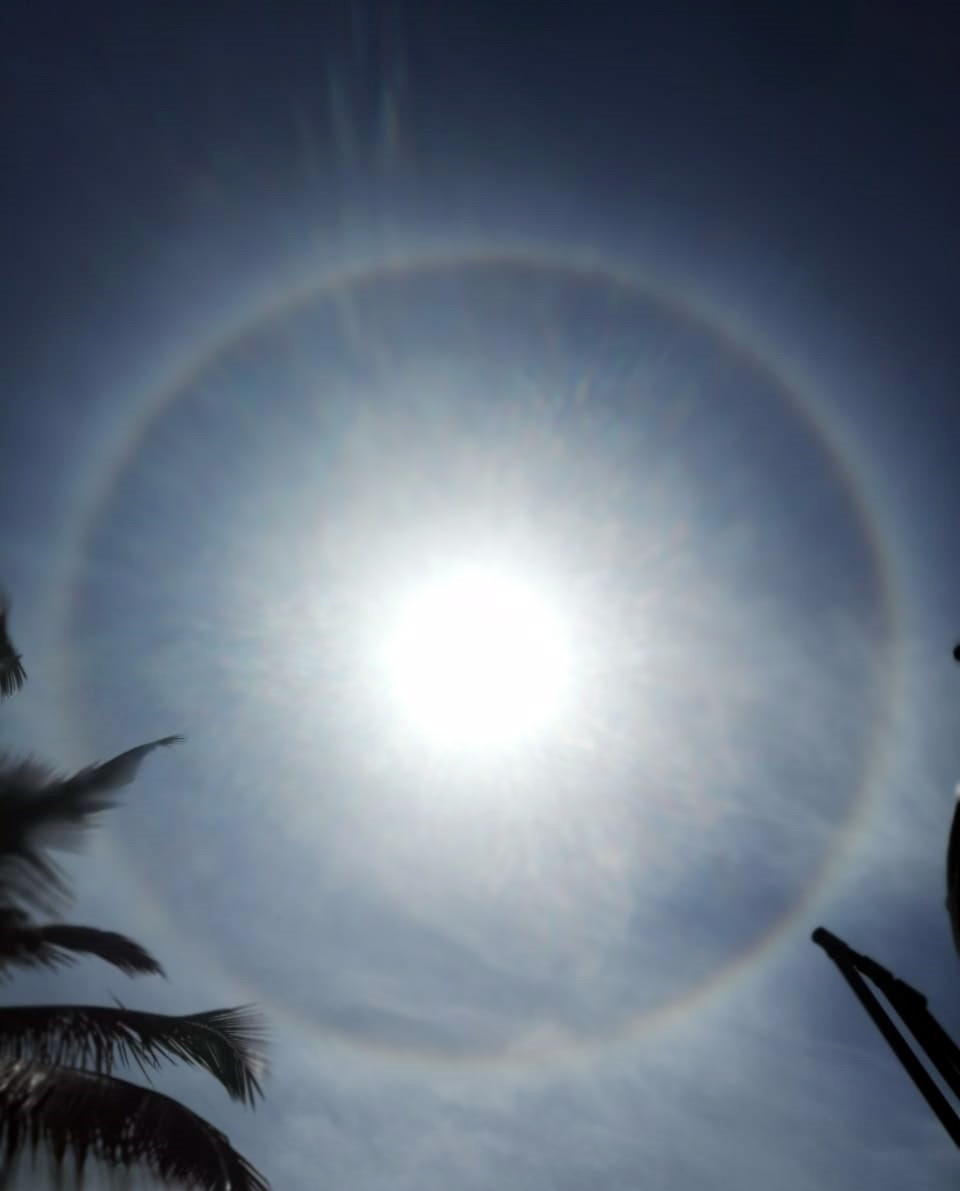Sun Halo/Kaleidoscope Effect | 27 May 2021
Why in News
Recently, the people of Bangalore witnessed a bright rainbow ring around the sun for a few moments - a rare optical and atmospheric phenomenon called “22 degree circular Halo”.
Key Point
- The phenomenon popularly known as the 22 degree circular halo of the sun or occasionally the Moon (also called a moon ring or winter halo), occurs when the sun’s or moon’s rays get deflected/refracted through the hexagonal ice crystals present in cirrus clouds.
- This is also called the Kaleidoscopic Effect.
- These halos are called 22-degree halos, as the halo or ring has an apparent radius of 22 degrees around the sun/moon.
- Circular halos specifically are produced by cirrus clouds, which are thin, detached, hair-like clouds. These clouds are formed very high up in the atmosphere, at a height of over 20,000 feet.
- Just like a rainbow, a halo is visible when viewed from the right angle — sometimes appearing just white but often with colours of the spectrum also clearly present.
- The halo is the brightest at the inner edge of the circular disk, with no light inside the disk as no light is refracted at smaller angles.
- Red light is refracted less than other colours of light, so the halo’s inner edge is reddish. Other shades typically tend to overlap and wash out.

